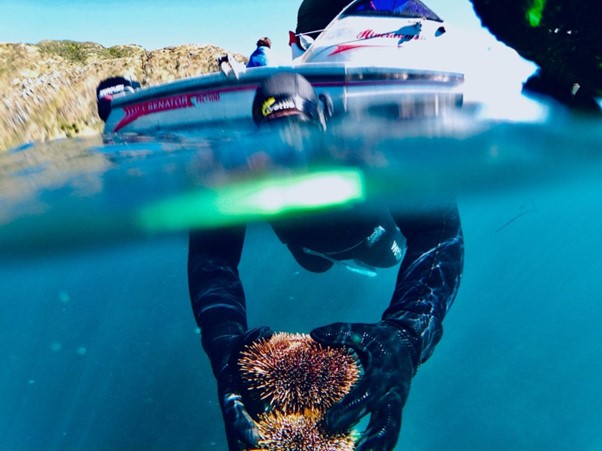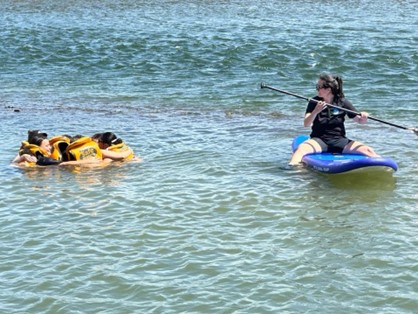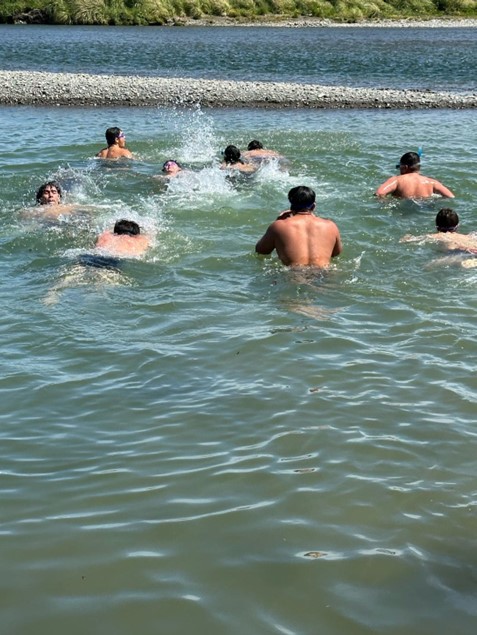I’ve just returned from the World Conference on Drowning Prevention, which was hosted in Perth, Western Australia. Present were more than 750 delegates from 51 different countries. With more than 90% of the world’s drowning deaths in low and middle countries, diversity of ideas and identities are important to address the diversity of water types that we encounter. In high and low income settings, minority and indigenous communities carry the highest burden of drowning morbidity and mortality. From my western perspective as a US-based advocate for drowning prevention, rescue, and treatment, I have always focused on identifying aquatic hazards, risk management, and hazard avoidance. At the conference, I met a group of indigenous speakers from New Zealand, including Dr. Terina Raureti, that challenged my worldview. From their perspective, many of the water safety and drowning prevention campaigns did not translate well into their communities because the water was presented as a hostile enemy that must be avoided. Instead, I heard from them that the water has its own language and story to tell. Diving, food gathering, swimming, and the outrigger canoe are part of the physical and spiritual connection in Māori communities. Water safety messages that demonized, rather than harmonized, just didn’t make sense and sought to sever their spiritual connection with the land and water. I am excited to introduce Dr. Raureti and her submission to “Dispatches” on her perspectives and experiences so that we may all learn.
-Justin Sempsrott, MD, Column Editor, The Waterline
Tēnā tātou e te whānau, ko wai mātou, ko Tangaroa Ara Rau tēnei, nō Aotearoa mātou. Kia ora everybody, we are Tangaroa Ara Rau an indigenous water safety group from New Zealand. We are named after Tangaroa, who is one of the guardians of everything in the ocean. Tangaroa Ara Rau means the many pathways, voices, and faces of Tangaroa, representing the different mauri (life-essences) that live within the water environment and therefore the many ways we, as an indigenous community, engage with, in and around the water. We choose to whakamana (empower) the voice of Tangaroa in all of our work, so that whānau Māori (indigenous families to New Zealand) are reminded about the power of the water and the innate connection we have to it as indigenous people. Our intention as an indigenous water safety group is to support whānau aspirations to engage with the water safely and in a way that keeps us connected to Tangaroa, our ancestors and our families past, present, and future. There are many kaupapa (initiatives) and ways that indigenous people engage with the water in New Zealand such as diving (for seafood), waka (canoe, outrigger canoe), mahinga kai (traditional food gathering practices), kauora (swimming), and healing. Each of these activities serve a purpose and contribute to flourishing well-being in indigenous communities and therefore keeps us safe in and around the water.

Tangaroa Ara Rau member Ben Hanara diving for Kina (sea urchin). (Terina Raureti)
We formed Tangaroa Ara Rau to emphasize the voices of indigenous people and our relationship with the water environment and put these at the forefront of all our water safety messaging and activity. This was in response to mainstream water safety messaging, which we found to be devoid of acknowledgement of the genealogical and spiritual connection and knowledge Māori have to our waterways. Therefore our mission as Tangaroa Ara Rau is to engage with indigenous communities across New Zealand to highlight their voices, needs, and knowledge in relation to the environment so that communities are able to flourish in and around the water. We currently volunteer as members of Tangaroa Ara Rau and have three core work streams: Ruku (diving), Waka (canoe), and Kauora (swimming). These work streams were created due to the expertise of our team and the knowledge and resources we hold. Ruku, waka, and kauora are also deeply ingrained in whakapapa (genealogy) and mātauranga (knowledge), stemming from an origin in our ancestors navigating to reach New Zealand and tell the story of how we have survived as a people, with water as our life source. Some of our specific work involves:
- Māori water safety messaging;
- Networking with indigenous water safety leaders, groups and workers;
- Māori advisory to non-indigenous groups;
- Water related tikanga (health and safety);
- Supporting and running wānanga (Māori meetings/thought space) and conferences;
- Research;
- Teaching;
- Resource development.
For this article I will briefly talk specifically about the stream of Kauora (swimming), and the importance of understanding the value of swimming for our people.
Ko wai au? Ko Terina Raureti tōku ingoa, Nō Ōtaki ahau. Who am I? I am Terina and I am from Ōtaki, a small coastal community on the west coast of the North Island in New Zealand. I am an indigenous person inherently connected to the land and waters that flow around this place, and for generations our family have enjoyed the water for the sustenance and nourishment it provides. Our rivers were the original source of this community where our ancestors used them for everyday living. Our homes and later our township, were built around these rivers. Our community has always used the rivers for food, bathing, healing, cleaning and have therefore always been a vital part of the way we live our lives as indigenous people. Our family has always understood that in order to enjoy and use the river, we must know how to swim. This didn’t mean learning the four commonly known swimming strokes of freestyle, backstroke, breastroke, and butterfly. It was just about being comfortable in and around the water for the life giving properties that it provided and having the ability to engage in the activities that we need to, by being good swimmers. This basically meant swimming to live a good life.

Dr. Raureti leading a group of students from Te Kura-ā-iwi o Whakatupuranga Rua Mano through the Kauora programme at Ōtaki river. (Terina Raureti)
Currently there is a gap in understanding swimming from an indigenous perspective and an absence of swimming programs that meet the needs of Māori. So, I undertook my PhD to redefine how we understand and teach swimming to indigenous communities in New Zealand. Kauora is made up of two words kau (swim, ancestor) and ora (live, be well). Kauora describes the intergenerational relationship we have through swimming, to be well in and around the water. This is deeply ingrained in our innate desire and need to use our water for the life source that it provides, the kai (food), and the healing properties that it has. Kauora as a theory has three key pillars that include kaukau (swimming as play), kauhoe (swimming as providing) and kautiaki (swimming as protection). Kaukau highlights the importance of enjoying our water together as family and friends. It recognises our whakapapa to our waterways, our intergenerational relationship with our water, and relationships that we build by spending time together in and around the water. Kauhoe is about the contribution that swimming has to the wider initiatives that whānau are participating in such as kai gathering practices, it recognises the indigenous knowledge systems that whānau have to be safe and successful in these practices. The final pillar, kautiaki has two elements: protection of people and protection of the water. Protection of people is about the safety element that swimming provides people. Protection of the water, is about our desire and obligation as indigenous people to nurture our water environment. It is our intention as indigenous people to ensure that our water continues to flow and is abundant for our future generations.
Kauora is only one stream of Tangaroa Ara Rau and is only one small initiative that is being developed in New Zealand to better serve the needs of our indigenous people in and around the water. Our main purpose as an indigenous group is to ensure our people are given the opportunity to thrive in and around the water in a way that makes sense to them. Ultimately, to ensure that the many voices of our people and of our water is heard and seen in New Zealand and across the world. If you want to learn more about what we are up to you can follow Tangaroa Ara Rau at our website, instagram, and facebook, or e-mail us at [email protected].
Nei rā te mihi ki a koutou kua whai wā ki te pānui tēnei paku tuhinga, mai i Ōtaki awa ki te ao. Thank you for finding the time to read this article, a small treasure from Ōtaki river to the world.

Māori students from Te Kura-ā-iwi o Whakatupuranga Rua Mano (Māori immersion school) participating in the Kauora programme at Ōtaki river. (Terina Raureti)
Glossary
|
Kai
|
Food
|
|
Kau
|
Swim, ancestor
|
|
Kauhoe
|
Swimming as providing; swim
|
|
Kaukau
|
Swimming as play; bathing
|
|
Kauora
|
Swimming
|
|
Kaupapa
|
Initiatives
|
|
Kautiaki
|
Swimming as protection
|
|
Kina
|
Sea urchin
|
|
Kura-ā-iwi
|
Māori immersion schooling
|
|
Mahinga kai
|
Traditional food gathering practices
|
|
Mana
|
Empower
|
|
Māori
|
Indigenous people of New Zealand
|
|
Mātauranga
|
Knowledge
|
|
Mauri
|
Life-essence
|
|
Ora
|
Live, be well
|
|
Ruku
|
Diving
|
|
Tangaroa
|
Deity of the ocean
|
|
Tangaroa Ara Rau
|
The many pathways of Tangaroa
|
|
Tikanga
|
Protocols
|
|
Waka
|
Canoe, outrigger canoe
|
|
Wānanga
|
Māori meeting/ thought space
|
|
Whakamana
|
Empower
|
|
Whakapapa
|
Genealogy
|
|
Whānau
|
Family
|